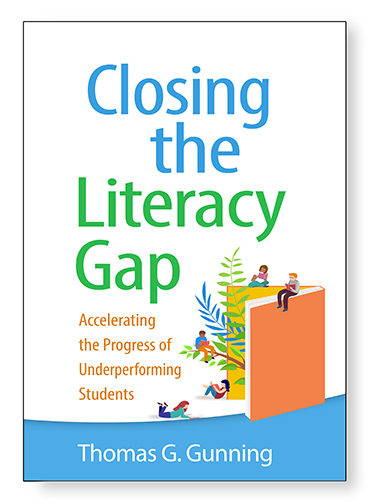Updates
Sign up to the Building Literacy email list for blog posts featuring updates, teaching tips, research briefs, book reviews, and more!

Updates
This feature provides updated information about techniques, materials, and approaches presented in Closing the Literacy Gap: Accelerating the Progress of Underperforming Students. Also included will be information that will be of interest to all literacy professionals who are striving to accelerate the progress of their students.
Units of Study in Reading Adds the Science of Reading
On p. 98 of Closing the Literacy Gap. I stated that “Units ofStudy (Heinemann) and Leveled Literacy Intervention (Heinemann), use a natural language approach. Words are selected for inclusion because they occur with high frequency rather than because they are decodable. Language in the readers is predictable rather than decodable. Students use picture clues and the predictability of the language to read.” However, the K-2 levels of the Units of Study have been revised. The revision incorporates a number of features designed to strengthen the program by adding research-supported elements. A main flaw in workshops programs at the early reading levels is the failure of the texts that students read to reinforce the phonics skills that have been taught. The introduction of decodable readers and teacher guidance in books selection should help mitigate this flaw. Other changes that are in keeping with research included bolstering the development of phonemic awareness, emphasizing the use of decoding strategies rather than using picture clues to read challenging words, prompting for phonics before prompting for meaning when students are decoding a word, and using letter-sound knowledge to read and retain high-frequency words.
Reference
Calkins, L. (2022, April 1). A response to Margaret Goldberg [Blog post]. The Reading and Writing Project. Retrieved from https://readingandwritingproject.org/blog/a-response-to-margaret-goldberg?fbclid=IwAR2B0i1jlPXVMPAaZqAdxnZtpvqsdyYQFrldWBs2ucIGL4 AWPM0Zhuas9nQ
The Effectiveness of Effect Sizes
One educator well worth following is David Steiner, executive director of the Institute for Education Policy and a professor in the School of Education at Johns Hopkins University. An advocate for accelerated learning and high-quality materials and instruction, Steiner (2021) presents a clear explanation of effect size in the latest issue of Phi Delta Kappan. Effect size, which is a measure of the impact of an intervention, is an essential tool for establishing the scientific basis for instruction. One point Steiner emphasizes is that the power of an effect size is determined by the grade level of the students. Desirable effect sizes at the lower grade levels need to be higher than effect sizes at the higher levels. His article contains a chart listing average effect sizes at K-12 levels.I was able to read this article online from a state website, researchitct.org, which offers free access to professional resources and children’s periodicals. Your state might have a similar resource.
Effective Teaching of High-Frequency Words
The teaching of high-frequency words is undergoing a much needed transformation. Using phonological approaches to teach high-frequency words is replacing the practice of having students memorize them visually, which is not the way printed words are learned. “A New Model for Teaching High-Frequency Words” by Linda Farrell, Michael Hunter, and Tina Osenga, which appears on the website Reading Rockets, presents a highly effective plan for making the transformation. This five-star article can be accessed at https://www.readingrockets.org/article/new-model-teaching-high-frequency-words